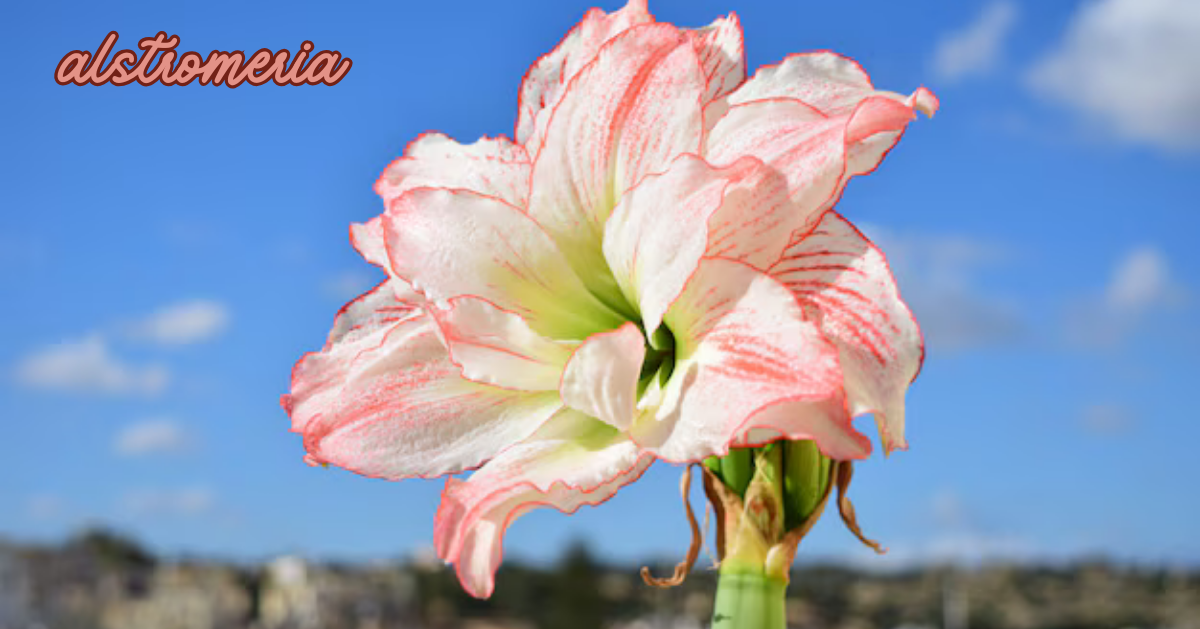Alstroemeria, commonly known as the Peruvian lily or lily of the Incas, is a gorgeous flowering plant that has captivated gardeners and flower enthusiasts worldwide. Known for its vibrant colors, intricate patterns, and long vase life, this flower is a must-have for any garden or floral arrangement. Let’s dive deep into what makes alstromeria so special and how you can make it thrive in your garden.
The Origin of Alstroemeria
Alstroemeria originates from South America, primarily Peru, Chile, and Brazil. These flowers were first introduced to Europe in the 18th century and have since become popular worldwide. Their exotic appeal and ability to adapt to various climates make them a favorite among gardeners.
Characteristics of Alstroemeria
Alstroemeria boasts trumpet-shaped blooms in a variety of colors, including pink, yellow, orange, red, and purple. Each flower features unique streaks or spots, adding an artistic flair to its appearance. These blooms are supported by sturdy stems and surrounded by lance-shaped leaves, which sometimes twist in unique patterns.
Symbolism of Alstroemeria
The flower is a symbol of friendship, devotion, and mutual support. Its six petals are often associated with important virtues: patience, understanding, humor, empathy, commitment, and respect. Adding Alstroemeria to a bouquet is a thoughtful gesture for loved ones.
Ideal Growing Conditions
To grow Alstroemeria successfully, you need to provide the right environment. These flowers thrive in full sun or partial shade and require well-drained soil. Let’s break it down further:
Soil: Alstroemeria prefers slightly acidic, loamy soil. Ensure good drainage to avoid root rot.
Sunlight: These plants love sunlight but can tolerate partial shade in hotter climates.
Temperature: They thrive in moderate climates and are sensitive to extreme cold or heat.
Planting Alstroemeria
When planting Alstroemeria, timing and technique are crucial. Spring is the best time to plant tubers or transplants. Follow these steps:
Prepare the Soil: Loosen the soil and add compost for nutrients.
Dig a Hole: Make a hole about twice the size of the tuber.
Place the Tuber: Position the tuber with its pointed end facing up.
Cover and Water: Fill the hole with soil and water thoroughly.
Caring for Alstroemeria
Proper care ensures that Alstroemeria blooms beautifully year after year. Here are some essential tips:
Watering: Keep the soil moist but not waterlogged. Water deeply during dry periods.
Fertilizing: Use a balanced fertilizer once every 4-6 weeks during the growing season.
Mulching: Apply mulch to retain moisture and regulate soil temperature.
Pruning: Deadhead spent blooms to encourage new growth.
Pest and Disease Management
While Alstroemeria is generally hardy, it can fall victim to pests and diseases. Common issues include:
Aphids and Spider Mites: Treat with insecticidal soap or neem oil.
Powdery Mildew: Ensure good air circulation and avoid overhead watering.
Root Rot: Prevent this by maintaining proper drainage.
Propagation of Alstroemeria
alstromeria can be propagated by division or from seeds. Division is the easiest method:
Dig Up the Plant: Carefully lift the plant from the soil.
Separate Tubers: Divide the tubers, ensuring each has roots and shoots.
Replant: Plant the divisions in prepared soil and water thoroughly.
Alstroemeria in Landscaping
Alstroemeria is a versatile plant that adds a splash of color to any garden. Use it as a border plant, in flower beds, or in mixed containers. Its long-lasting blooms make it an excellent choice for cutting gardens.
Alstroemeria in Floral Arrangements
One of the reasons alstromeria is so popular is its exceptional vase life. These flowers can last up to two weeks in arrangements. Their vibrant hues and unique patterns make them ideal for bouquets, centerpieces, and wedding decor.
Seasonal Care for Alstroemeria
Different seasons require varying levels of care:
Spring: Plant new tubers and fertilize.
Summer: Water consistently and deadhead spent blooms.
Autumn: Cut back foliage and mulch to protect tubers from frost.
Winter: In colder regions, lift tubers and store them indoors.
Common Varieties of Alstroemeria
There are many varieties of Alstroemeria to choose from, including:
‘Inticancha’: Compact and perfect for pots.
‘Ligtu Hybrids’: Known for their vibrant hues.
‘Princess Lilies’: Dwarf varieties ideal for borders.
Why Choose Alstroemeria for Your Garden?
Alstroemeria is not just a pretty flower; it’s a gardener’s delight. Its low-maintenance nature, coupled with its stunning appearance, makes it a top choice. Whether you’re a novice or an expert, this flower is an excellent addition to your garden.
Sustainability and Alstroemeria
Alstroemeria is a sustainable choice for gardens as it requires minimal resources. Its ability to thrive in various conditions makes it an eco-friendly option for enhancing biodiversity.
Conclusion
Alstroemeria is a vibrant, versatile, and easy-to-grow flower that adds charm to any setting. Whether in a garden or a vase, its beauty and longevity are unparalleled. If you’re looking to brighten up your space, Alstroemeria is the perfect pick.
FAQs
How long does Alstroemeria bloom?
Alstroemeria blooms typically last from spring to late autumn, depending on the variety and care.
Can Alstroemeria grow indoors?
Yes, with sufficient light and proper care, alstromeria can thrive indoors.
Is Alstroemeria toxic to pets?
Yes, it can be mildly toxic to cats and dogs if ingested. Keep it out of reach of pets.
How do I make Alstroemeria last longer in a vase?
Cut the stems at an angle, remove leaves below the waterline, and change the water every few days.
What is the best fertilizer for Alstroemeria?
A balanced, slow-release fertilizer with equal parts nitrogen, phosphorus, and potassium works best.

